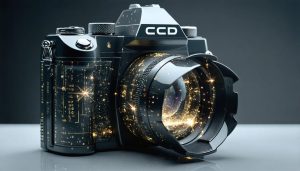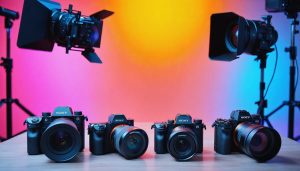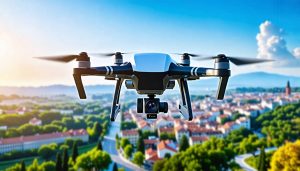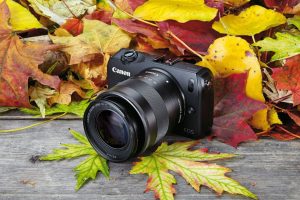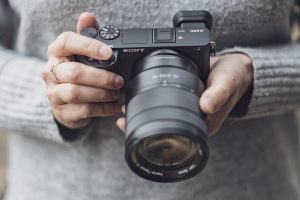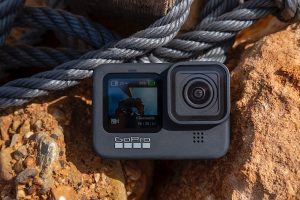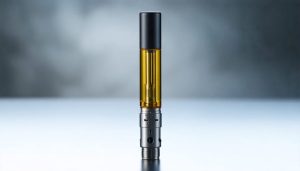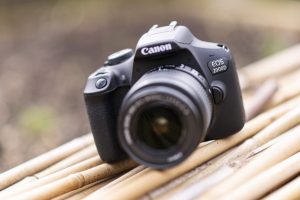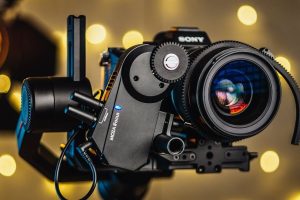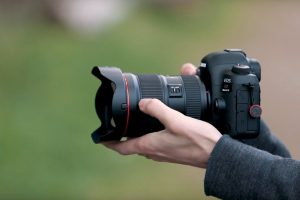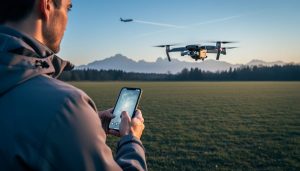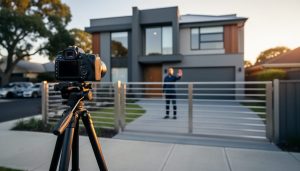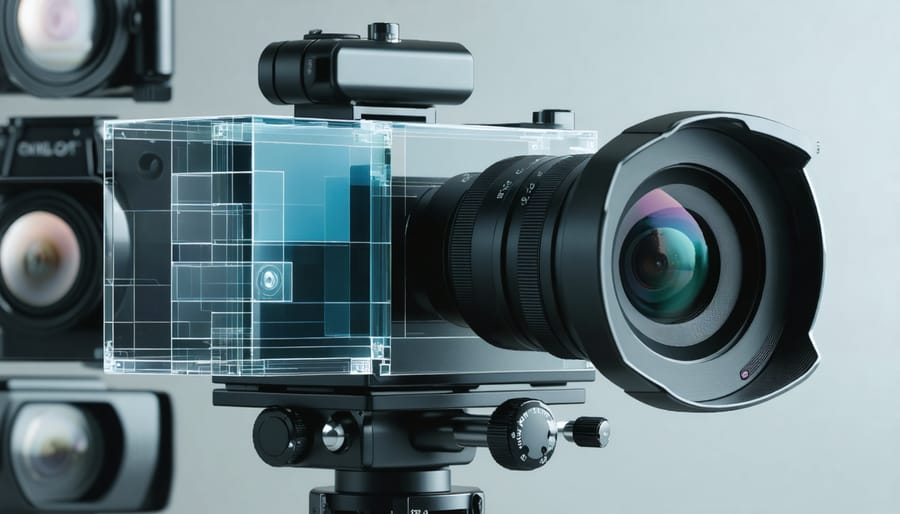
High-definition video cameras have revolutionized the way we capture and share our world, marking a defining moment in the evolution of video cameras. From stunning 4K resolution that reveals every detail to advanced autofocus systems that track subjects with unprecedented precision, modern HD cameras combine professional-grade features with user-friendly interfaces.
Today’s HD video cameras pack more power than entire production studios of decades past, offering creators everything from advanced image stabilization to RAW recording capabilities. Whether you’re documenting life’s precious moments or producing professional content, these sophisticated imaging tools deliver cinema-quality results in remarkably compact packages.
Understanding HD video technology isn’t just about higher pixel counts – it’s about mastering the art of visual storytelling through enhanced dynamic range, superior low-light performance, and versatile recording formats. As cameras continue pushing resolution boundaries from 4K to 8K and beyond, they’re transforming how we preserve memories and create compelling visual content.
For photographers expanding into video, modern HD cameras represent the perfect bridge between still and motion photography, offering hybrid capabilities that were unimaginable just a few years ago. These tools aren’t just recording devices; they’re gateways to creative expression that blend professional features with intuitive operation.
Understanding HD Video Resolution Standards
Full HD vs 4K vs 8K
When it comes to video resolution, the differences between Full HD (1920×1080), 4K (3840×2160), and 8K (7680×4320) are significant, though their practical benefits depend largely on your specific needs and viewing conditions.
Full HD remains a solid choice for many creators, offering excellent image quality that’s perfect for social media, web content, and standard TV viewing. It requires less storage space and processing power, making it ideal for quick turnaround projects or when working with limited resources.
4K has become increasingly standard in modern cameras, delivering four times the resolution of Full HD. This higher resolution provides noticeably sharper details and allows for more flexibility in post-production, such as cropping or stabilizing footage without losing quality. The extra detail really shines on larger displays and when viewing content up close.
8K represents the cutting edge of video resolution, with 16 times the pixels of Full HD. While impressive on paper, the real-world benefits of 8K are currently limited for most users. Few displays can show 8K content natively, and the file sizes are enormous. However, it does offer incredible flexibility for post-production work and future-proofs your content for when 8K displays become more common.
Consider your delivery platform and workflow when choosing a resolution. While higher resolutions offer more detail, they also demand more storage space, processing power, and sophisticated editing equipment.
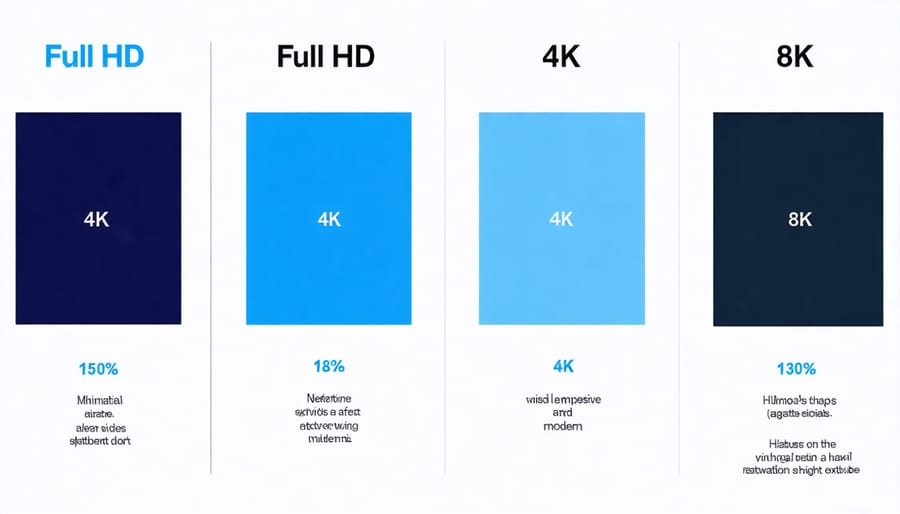
Frame Rates and Their Impact
Frame rate selection can make or break your video footage, impacting everything from motion smoothness to the overall mood of your creation. The most common frame rate, 24fps, has become the cinematic standard because it closely matches how our eyes perceive motion, creating that classic film-like look we’re all familiar with.
For smooth action sequences or sports footage, 60fps is your go-to choice. This higher frame rate captures fluid motion perfectly, making it ideal for fast-moving subjects or when you want to include slow-motion effects in post-production. Just remember that higher frame rates require more storage space and processing power.
The 30fps setting strikes a nice balance between the cinematic feel of 24fps and the smoothness of 60fps. It’s particularly well-suited for general-purpose videography, including vlogs, documentaries, and event coverage. Many content creators prefer 30fps for its natural look while maintaining good motion clarity.
Some cameras now offer even higher frame rates like 120fps or 240fps. These ultra-high frame rates are perfect for super slow-motion shots, allowing you to capture split-second moments in incredible detail. However, they often come with trade-offs in resolution or require bright lighting conditions to work effectively.
When choosing your frame rate, consider your end platform too. Social media platforms and streaming services may have specific requirements or limitations that could affect your choice.
Essential Video Features in Modern Cameras
Autofocus Systems for Video
Modern video cameras employ sophisticated autofocus systems specifically designed for the unique challenges of capturing moving subjects. Unlike still photography, video autofocus needs to track subjects smoothly and consistently without sudden jumps or hunting that could ruin a shot.
The most advanced systems use hybrid autofocus, combining phase-detection and contrast-detection methods. Phase-detection points spread across the sensor provide quick initial focus, while contrast detection fine-tunes accuracy. This dual approach helps maintain sharp focus even as subjects move through the frame.
Many current cameras feature intelligent subject recognition, using AI to identify and track faces, eyes, or specific objects. This technology is particularly valuable for vloggers and documentary filmmakers who need their subjects to remain consistently in focus while moving.
Touch-to-focus capabilities have also revolutionized video autofocus. Operators can simply tap the LCD screen to shift focus between subjects, creating smooth, cinematic focus transitions. Some systems even allow you to set the focus transition speed, enabling everything from snap-focus effects to gradual, subtle shifts.
However, it’s worth noting that even the best autofocus systems may struggle in challenging conditions like low light or fast-moving subjects. Many professional videographers still prefer manual focus for critical shots, using autofocus as a helpful tool rather than relying on it exclusively.
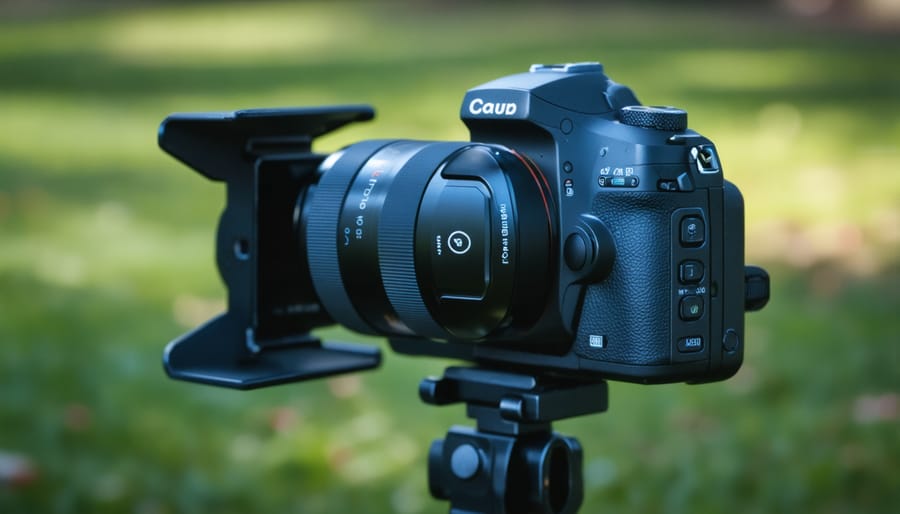
Video Compression and Codecs
Video compression and codecs play a crucial role in managing the massive amounts of data generated by HD video recording. As camera sensor technology advances, the need for efficient compression becomes even more important.
Modern HD cameras typically offer several compression options, with H.264/AVC being the most widely used codec for its excellent balance of quality and file size. The newer H.265/HEVC codec provides even better compression while maintaining similar quality, though it requires more processing power.
When shooting, you’ll encounter terms like “ALL-I” and “IPB” compression. ALL-I (All-Intra) compression treats each frame independently, making it ideal for editing but resulting in larger files. IPB (Interframe) compression creates smaller files by only recording the differences between frames, perfect for casual shooting and social media sharing.
Most cameras offer multiple bitrate options, typically ranging from 50Mbps to 400Mbps or higher. Higher bitrates mean better quality but larger files. For everyday shooting, a moderate bitrate of 100-200Mbps usually provides excellent results without overwhelming your storage.
Popular video formats include MP4, MOV, and AVCHD. MP4 offers great compatibility across devices, while MOV is preferred in professional workflows. When choosing a format, consider your editing software’s requirements and your intended delivery platform.
Image Stabilization for Video
Image stabilization is crucial for achieving professional-looking video footage, and modern HD cameras offer multiple approaches to combat camera shake. The most common methods include optical stabilization (OIS), electronic stabilization (EIS), and sensor-shift stabilization.
Optical stabilization uses floating lens elements that physically move to counteract camera movement. This system is particularly effective for handheld shooting and walking shots, as it works in real-time without compromising image quality. Many professional videographers prefer OIS because it performs well in low-light conditions and maintains the full sensor resolution.
Electronic stabilization, on the other hand, uses software algorithms to analyze and correct movement in post-processing. While this method doesn’t require special hardware, it typically crops the frame slightly to create a buffer for stabilization. Modern EIS has become increasingly sophisticated, with some systems using AI to predict and correct camera movement patterns.
Sensor-shift stabilization moves the entire image sensor to compensate for camera movement. This technology is especially valuable because it works with any lens attached to the camera, making it a versatile solution for videographers who frequently switch between different glass.
For the smoothest results, many professionals combine multiple stabilization methods with external tools like gimbals or steadicams. Some cameras even offer hybrid stabilization, which merges two or more of these technologies for enhanced stability in challenging shooting conditions.
Real-World Performance Factors
Heat Management and Recording Limits
Heat management is one of the most critical challenges facing modern HD video cameras, particularly when recording extended clips. As cameras pack more processing power into increasingly compact bodies, they generate significant heat that must be efficiently dissipated to prevent damage to internal components and maintain optimal performance.
Most cameras implement automatic shutoff features when internal temperatures reach critical levels. This safety mechanism, while sometimes frustrating for users, protects the sensor and processing circuits from potential damage. Professional cameras typically handle heat better than consumer models, thanks to larger bodies with more efficient cooling systems and heat sinks.
Recording limits also come into play, with many cameras restricting continuous recording to 29 minutes and 59 seconds. This limitation often stems from regulatory classifications rather than technical constraints, as cameras recording beyond 30 minutes may be classified as video cameras and subject to different import duties in some regions.
To manage these challenges effectively, many photographers employ practical workarounds. These include using external recorders, which move the processing load outside the camera body, or recording in shorter segments with brief cooling periods between clips. Some manufacturers have introduced innovative cooling solutions, such as active cooling vents and heat-dissipating body designs, allowing for extended recording times even in challenging conditions.
For time-critical shoots, it’s essential to test your camera’s heat limitations beforehand and plan accordingly, especially when working in warm environments or with demanding codec settings.
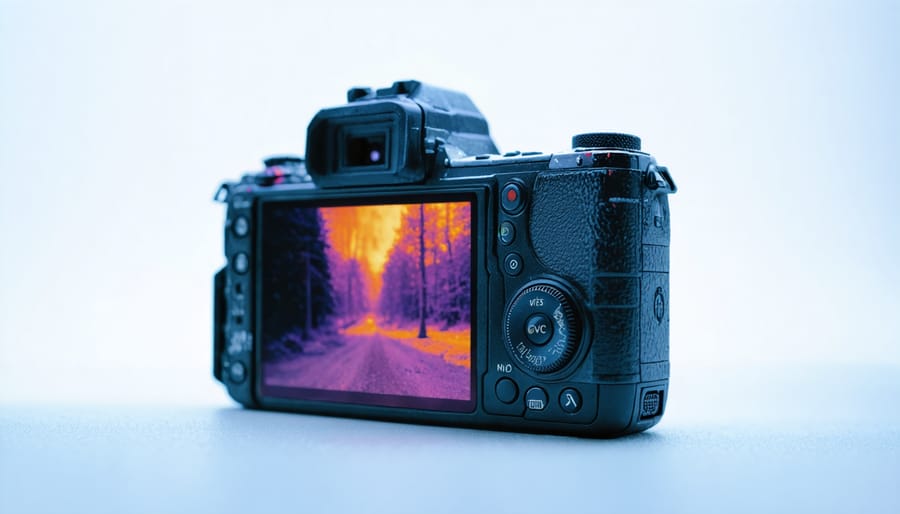
Storage Requirements
When recording HD video, storage requirements can be substantial, and choosing the right memory card is crucial for optimal performance. A typical 1080p HD video consumes approximately 200MB per minute, while 4K footage can demand up to 800MB per minute, depending on your compression settings and frame rate.
For reliable HD video recording, opt for memory cards with both sufficient capacity and appropriate speed ratings. Look for cards with a minimum UHS Speed Class 3 (U3) or Video Speed Class 30 (V30) rating, which guarantees sustained write speeds of at least 30MB/s. This prevents buffer issues and dropped frames during recording.
Storage capacity needs vary based on your shooting requirements. For casual HD video recording, a 64GB card might suffice, providing roughly 4-5 hours of 1080p footage. However, professional shooters should consider 128GB or larger cards, especially when working with 4K resolution.
Keep in mind that faster cards, while more expensive, offer additional benefits beyond smooth recording. They enable faster file transfers to your computer and support advanced features like high frame rate recording and simultaneous RAW photo capture. Consider keeping multiple cards on hand for extended shooting sessions, and always format cards in-camera before important shoots to ensure optimal performance.
Remember to implement a reliable backup strategy, as losing hours of video footage due to card failure can be devastating. Consider investing in a portable hard drive for on-location backups of your valuable footage.
Battery Life for Video Recording
Battery life is one of the most critical yet often overlooked aspects of video recording. When shooting HD video, your camera consumes significantly more power than during still photography, primarily due to continuous sensor operation, LCD screen usage, and internal processing demands.
Most modern cameras can record between 1-2 hours of continuous HD video on a single battery charge under optimal conditions. However, real-world usage typically yields shorter durations due to factors like frequent starting and stopping, menu navigation, and preview playback.
To maximize your recording time, consider these practical power management strategies. First, carry multiple fully-charged batteries – professionals typically pack at least three for a full day of shooting. Power banks can also serve as backup solutions for cameras with USB charging capabilities.
Disable unnecessary features like Wi-Fi and Bluetooth when not in use, as these quietly drain power in the background. Reducing LCD brightness and using the EVF when possible can also extend battery life significantly. In cold weather, keep spare batteries in an inside pocket, as low temperatures can dramatically reduce battery performance.
For extended shooting sessions, consider investing in a battery grip, which can double or triple your recording time. Some professional cameras also offer the option of direct AC power connection through dummy batteries, ideal for studio work or long-form interviews.
Advanced Video Features
Log Profiles and Raw Video
Log profiles and raw video capabilities represent a crucial advancement in modern HD video cameras, offering filmmakers unprecedented control over their footage’s final look. These professional video features essentially provide a flat, neutral starting point that preserves maximum detail in both highlights and shadows.
Popular log profiles like S-Log (Sony), C-Log (Canon), and V-Log (Panasonic) capture a wider dynamic range by redistributing the tonal values across the available bit depth. Think of it as spreading butter more evenly across your toast – you’re getting better coverage of all the tonal ranges rather than concentrating them in specific areas.
Raw video takes this flexibility even further by recording unprocessed sensor data. While this results in larger file sizes, it provides remarkable freedom in post-production for adjusting white balance, exposure, and color. However, it’s worth noting that raw video requires more storage space and processing power to work with effectively.
For everyday shooting, standard color profiles might suffice, but when you need that extra headroom for color grading or are shooting in challenging lighting conditions, log profiles and raw video become invaluable tools. Many modern cameras offer hybrid options too, like compressed raw formats, which balance quality with manageable file sizes.
Remember, while these features are powerful, they require careful exposure and a solid understanding of color grading to achieve the best results. Start with standard profiles and gradually experiment with log and raw as your skills develop.
External Recording Options
External recorders have become game-changers for videographers seeking superior quality from their HD cameras. These devices connect to your camera via HDMI and capture video directly from the sensor, bypassing internal compression limitations.
The primary advantage of external recording is the ability to capture higher bitrates and more professional codecs like ProRes or DNxHD. This results in more detailed footage with greater flexibility for color grading in post-production. Many external recorders also offer features like waveforms, vectorscopes, and false color monitoring, helping you achieve perfect exposure and focus.
Setting up an external recorder is straightforward: connect it to your camera’s HDMI port, mount it on your rig, and ensure both devices are powered properly. Most modern recorders use SSDs or SD cards for storage, offering hours of recording time at high bitrates.
However, external recording does come with trade-offs. The setup adds bulk to your camera rig and requires additional power management. You’ll need to factor in the cost of the recorder itself, storage media, and accessories like batteries and mounting solutions.
For professional productions or situations where maximum quality is essential, external recording can be worth the investment. It’s particularly valuable for interview setups, documentary work, or any scenario where post-production flexibility is crucial.
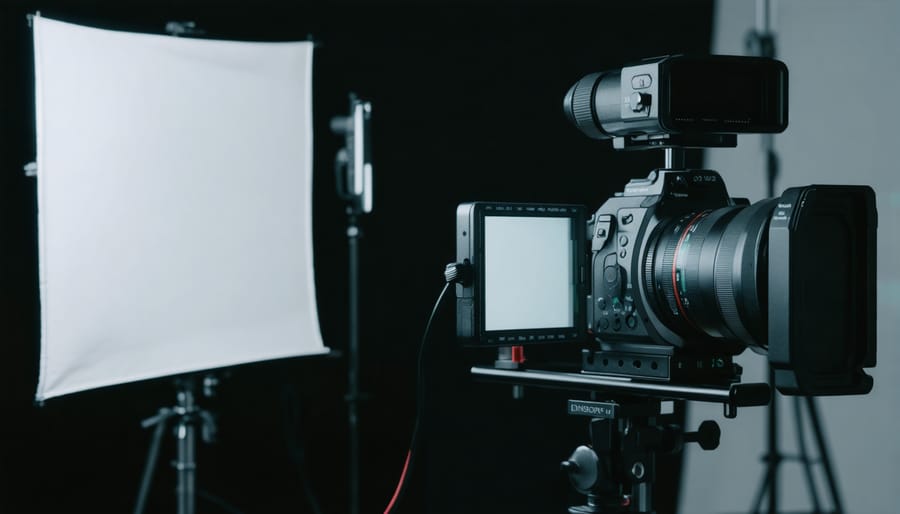
The evolution of high definition video cameras has transformed the way we capture and share our stories. From humble beginnings with standard definition to today’s top video cameras capable of shooting in 8K resolution, the technology continues to push boundaries and exceed expectations.
As we’ve explored throughout this article, modern HD video cameras offer an impressive array of features that were once reserved for professional cinema equipment. The integration of advanced autofocus systems, in-body stabilization, and sophisticated compression algorithms has democratized high-quality video production, making it accessible to creators at all levels.
Looking ahead, we can expect to see continued innovation in several key areas. Artificial intelligence will play an increasingly important role in camera capabilities, from enhanced subject tracking to automated scene optimization. The trend toward higher resolution and frame rates will persist, though with a greater focus on practical applications rather than just pushing technical boundaries.
Mobile integration and wireless connectivity will become even more seamless, allowing for instant sharing and remote camera control. We’re also likely to see further improvements in low-light performance and dynamic range, making it easier to capture challenging scenes with minimal compromise.
For photographers and videographers considering their next equipment upgrade, the future looks bright. The convergence of still and video capabilities in modern cameras means you no longer have to choose between the two disciplines. Whether you’re a wedding photographer, content creator, or documentary filmmaker, today’s HD video cameras offer the tools needed to bring your creative vision to life.

